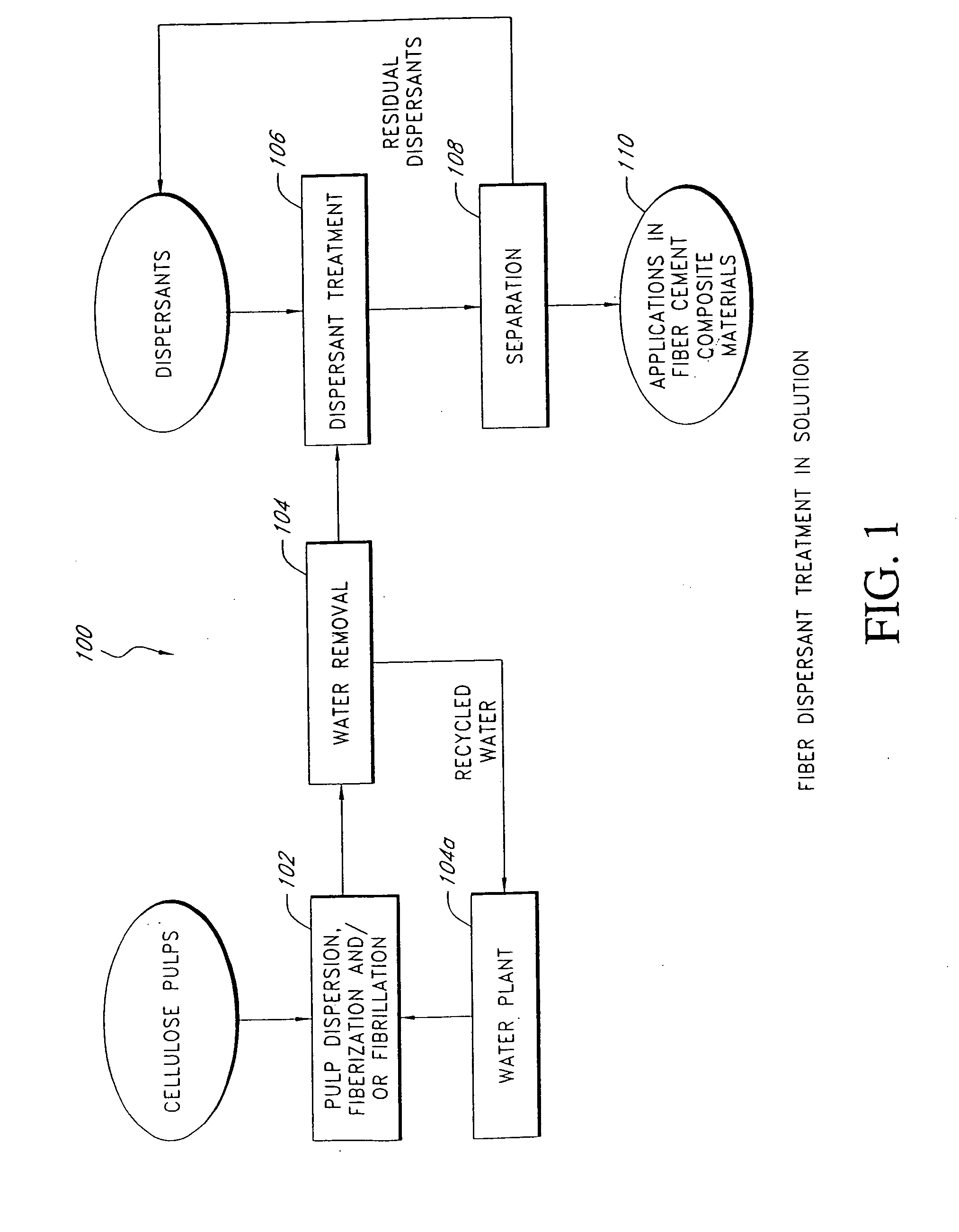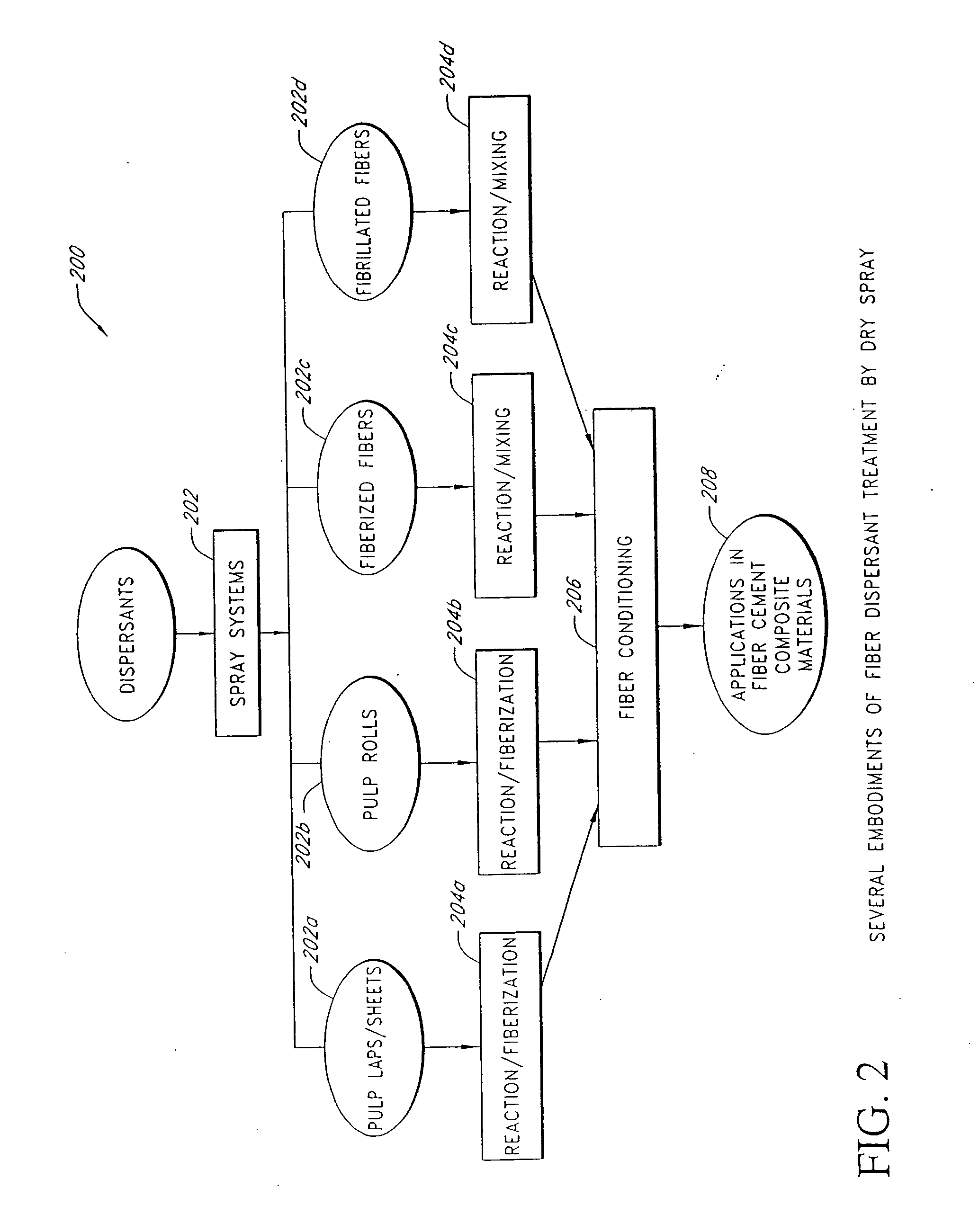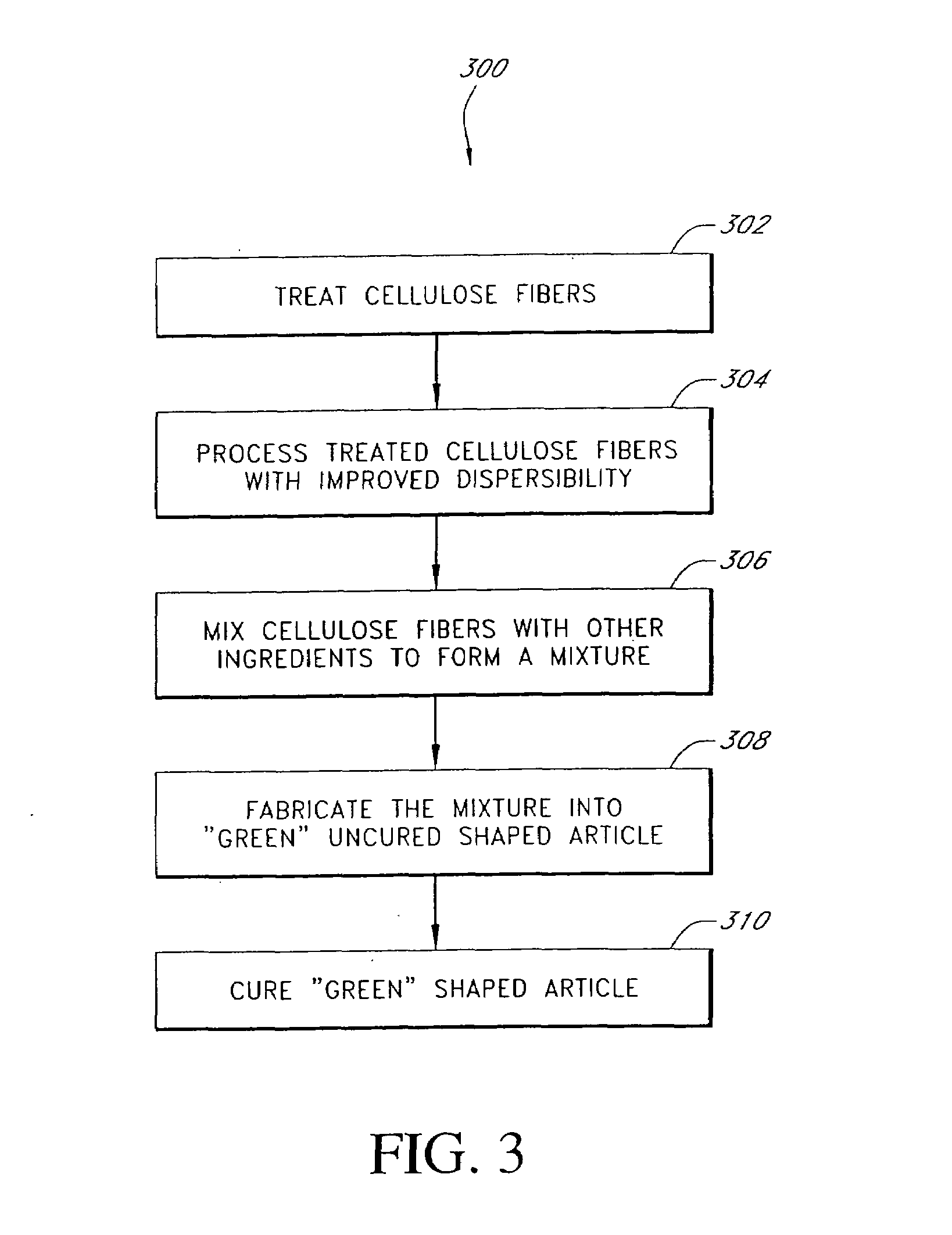Fiber reinforced cement composite materials using chemically treated fibers with improved dispersibility
a technology of fiber reinforced cement and chemical treatment, which is applied in the direction of textiles and papermaking, pulp properties modification, solid waste management, etc., can solve the problems of lower strength and toughness, performance drawbacks of cellulose reinforced fiber cement materials, and lower reinforcing efficiency, so as to improve the key mechanical and physical properties of the material, improve the dispersibility of the building material, and improve the effect of fiber dispersion and reinforcing efficiency
- Summary
- Abstract
- Description
- Claims
- Application Information
AI Technical Summary
Benefits of technology
Problems solved by technology
Method used
Image
Examples
example 1
[0107]In this example, two types of cellulose fibers were fiberized in dry form by a hammermill. One was the debonder treated pulp of Weyerhaeuser pulp grade NF401, and the other was the control fiber, the same fibers without debonder treatment (Weyerhaeuser pulp grade NF416). Fiber cement composite specimens were fabricated using an extrusion process. The formulation for the samples A and B was the same except different fibers were used. The formulation contained 10% fibers (chemically treated fibers having improved dispersion for formulation A and conventional untreated fiber for formulation B), 10% calcium silicate hydrate, 1.5% methylcellulose, 39.25% Portland cement and 39.25% ground silica. The extruded samples were precured at 150° C. for 12 hours and then cured by autoclaving at 185° C. for 12 hours. The densities of Samples A and B were around 0.9 grams per cubic centimeter. Some key physical and mechanical properties of samples A and B are shown in Table 2.
TABLE 2Compariso...
example 2
[0110]FIG. 4 illustrates a comparison of key mechanical and physical properties of extruded fiber reinforced cement composite materials made with and without the chemically treated fibers. Sample C was prepared with chemically treated fibers with improved dispersibility (Weyerhaeuser's grade NF405, a debonder treated fibers) while sample D contains regular pulp (Weyerhaeuser's grade CF416). The samples have the same formulation except for the fibers used: 10% of treated fibers (NF405), 10% of CF416. The fibers were fiberized by hammermilling. The samples were prepared by extrusion and tested for MOR, Z-direction tensile strength and toughness energy in accordance with ASTM (American Standard Test Method) C1185-98a entitled “Standard Test Methods for Sampling and Testing Non-Asbestos Fiber-Cement Flat Sheet, Roofing and Siding Shingles, and Clapboards.” As shown in FIG. 4, extruded fiber reinforcement composite materials made with chemically treated fibers with improved dispersibilit...
example 3
[0111]In this example, the formulations of samples E and F were substantially the same except that different fibers were used: about 9% fiber by weight (chemically treated fiber with improved dispersibility or regular untreated fiber); about 10% calcium silicate hydrate which, in one embodiment, is used as a density modifier, about 1.5% methylcellulose which, in one embodiment, is used as an additive-viscosity modifier, about 39.75% Portland cement and about 39.75% ground silica. Fibers used in sample E were chemically treated with a surfactant emulsion, about 50:50 blend of di(hydrogenated tallow) dimethyl ammonium chloride (CAS number 61789-80-8) and alkyl-benzyl-dimethy ammonium chloride (CAS number 61789-72-8) by the dry spraying technique. The total dosage of the dispersant was about 0.06% of the oven dried fiber mass. The treatment was done at ambient temperature before the fiberization. Fibers used in Sample F were regular untreated fibers. Specimens of fiber cement composite...
PUM
| Property | Measurement | Unit |
|---|---|---|
| length | aaaaa | aaaaa |
| length-weighted average length | aaaaa | aaaaa |
| length | aaaaa | aaaaa |
Abstract
Description
Claims
Application Information
 Login to View More
Login to View More - R&D
- Intellectual Property
- Life Sciences
- Materials
- Tech Scout
- Unparalleled Data Quality
- Higher Quality Content
- 60% Fewer Hallucinations
Browse by: Latest US Patents, China's latest patents, Technical Efficacy Thesaurus, Application Domain, Technology Topic, Popular Technical Reports.
© 2025 PatSnap. All rights reserved.Legal|Privacy policy|Modern Slavery Act Transparency Statement|Sitemap|About US| Contact US: help@patsnap.com



